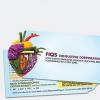Hello everyone.
I need some help. I am trying to figure out if there is any information about the time and temp of HTST pasteurization of non-dairy yogurt and non-dairy liquid products. I know the PMO has the temperatures for fluid milk and other dairy products and the use of the alkaline phosphatase test is used in pasteurization validation of dairy products. Is there something like this test for non-dairy products? I have thought about sampling the white mass after pasteurization sending the sample out for a third party lab testing for the biological hazard organisms that are called out for the raw ingeridents.












